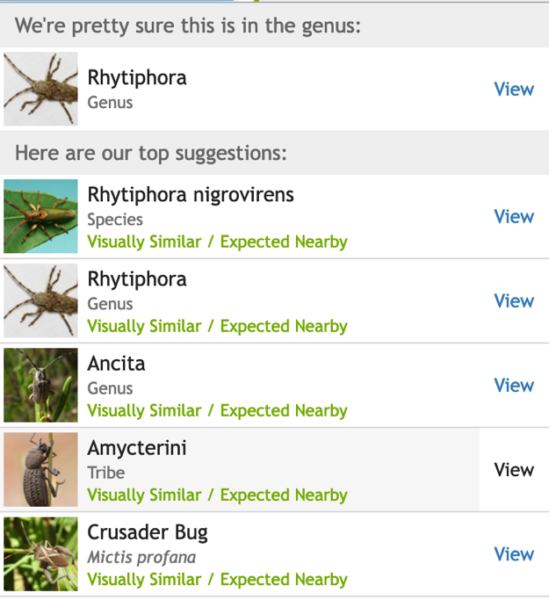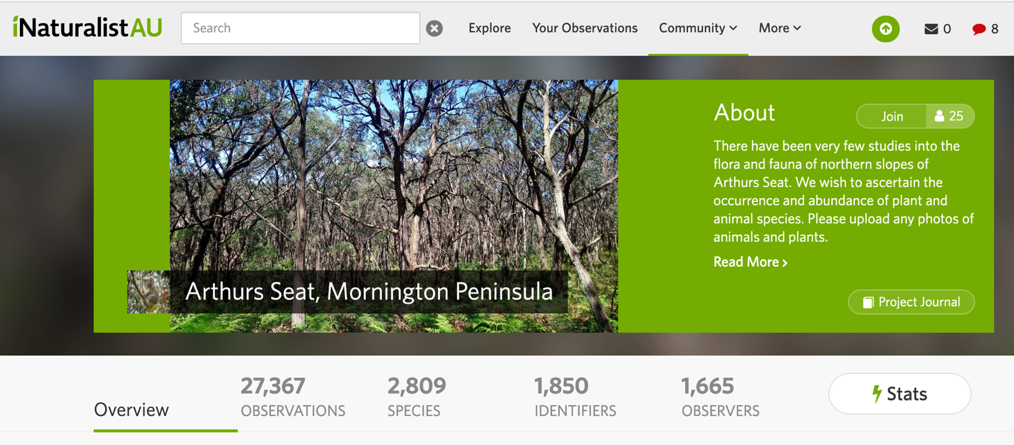iNaturalist
Thanks to technological advances, citizen science has evolved into a major force in observing and understanding our environment. Familiar examples include Birds in Backyards, the FrogID, and Snap Send Solve (for dead or injured animals).
 What is not widely realised is that many of these data are automatically uploaded to a central repository called Atlas of Living Australia (ALA). A repository that now contains over 130 million records of flora and fauna in Australia (indigenous and exotic) and has become a go-to place for research, environmental assessments, and many other applications.
What is not widely realised is that many of these data are automatically uploaded to a central repository called Atlas of Living Australia (ALA). A repository that now contains over 130 million records of flora and fauna in Australia (indigenous and exotic) and has become a go-to place for research, environmental assessments, and many other applications.
ALA has been the source of imagery and information for many of the articles that have appeared in this newsletter. ALA also entered into an agreement whereby all Australian data loaded into the international repository iNaturalist are transferred across.
Let me give you an example how my data are entered and used by this system.

Images taken in the field are loaded first into iNaturalist. This is easily done by adding the free iNaturalist App to the phone, then following the straightforward instructions.
iNaturalist has an excellent AI engine that has learnt how to recognise distinguishing features using the ALA data base. The AI engine provides me with an assessment of the most likely ID’s from my image, together with an indication of the level of confidence. I further increase the confidence by telling it to only select possibilities from the neighbourhood and then doing an extra bit of sleuthing based on its assessment.
Figure showing the response to my uploading a Rhytophora insect.
My final, uploaded assessment and image is then made available to a field of experts, many of whom also are citizen scientists. If one or more agree, the observation is advanced to ‘research grade’, where it can be used with confidence by the wider community.
Clicking the community button at the top, then Projects, enables you to set up an analysis of specific areas, or species. Or you can simply use the many other projects that already have been established.
For example, iNaturalist collates my global observations in a project called Carranya’s Species, where I can gain immediate access and analyse at any time.
Interested in all observations on the Peninsula? Mornington Peninsula Biodiversity is the project for that. Or try Arthurs Seat.

As the data come in and more people think of creative uses, the value of our individual efforts grows and grows. Your observations should continue to be used long after you have passed on.
A new, exciting effort that has recently been launched is ALA’s Biosecurity Alert Service. To use their words:
“ALA’s Biosecurity Alerts Service provides weekly email notifications of occurrences of invasive species to management authorities. These occurrences are aggregated from more than 850 data suppliers, including iNaturalist and FeralScan. The Biosecurity Alerts Service reports the species name, observation location, images, data provider and provides direct links to the ALA occurrence record.”

“Land management agencies who receive the alerts are using the information in many ways, including verifying reports, undertaking management actions and correcting false information.”
So what are you waiting for? Grab your camera or phone and have fun while contributing to our knowledge and the protection of our fragile environment.
– Article by Greg Holland, images from iNaturalist, cartoon from iStock.